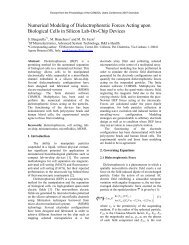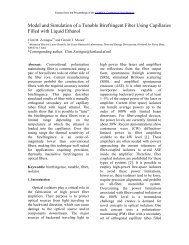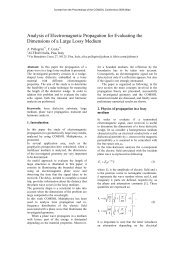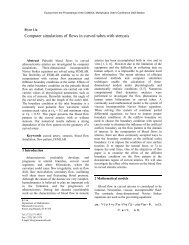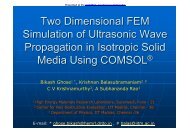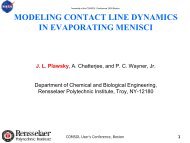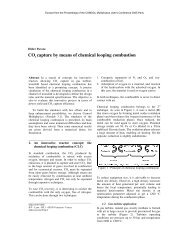Mathematical Modeling of Nanomaterials - COMSOL.com
Mathematical Modeling of Nanomaterials - COMSOL.com
Mathematical Modeling of Nanomaterials - COMSOL.com
You also want an ePaper? Increase the reach of your titles
YUMPU automatically turns print PDFs into web optimized ePapers that Google loves.
Excerpt from the Proceedings <strong>of</strong> the <strong>COMSOL</strong> Multiphysics User's Conference 2005 Frankfurt<br />
Figure 5 Figure 6<br />
In Fig. 7 we show the density <strong>of</strong> the sample in dependence on the temperature and for<br />
different proportions <strong>of</strong> the hardening agent. In Fig. 8 we show the loss <strong>of</strong> mass in the<br />
sample in dependence on the temperature and for different proportions <strong>of</strong> the hardening<br />
agent.<br />
Figure 7 Figure 8<br />
1.2 Magnetic nanoparticles for in vivo applications:<br />
A Numerical modeling study<br />
1.2.1 Background<br />
In vivo applications <strong>of</strong> bio<strong>com</strong>patible magnetic nanoparticles in a carrier liquid controlled by<br />
an external magnetic field from outside the body has recently been proposed for specific<br />
drug delivery such as in locoregional cancer therapies or the occlusion aneurysms. They can<br />
also be used as guided contrast agents in myocardial imaging after myocardial infarction.<br />
However, the choice <strong>of</strong> the optimal clinical setting still remains a challenge for every <strong>of</strong> the<br />
mentioned applications. A numerical heterogeneous multiscale model can be used for the<br />
optimal a priori determination <strong>of</strong> the free parameters and might help to over<strong>com</strong>e this<br />
problem. In this study, we are going to present an approach to the implementation <strong>of</strong> such a


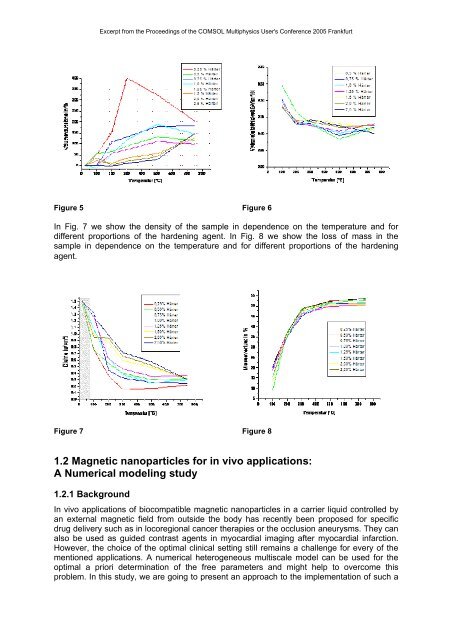
![[PDF] Microsoft Word - paper.docx - COMSOL.com](https://img.yumpu.com/50367802/1/184x260/pdf-microsoft-word-paperdocx-comsolcom.jpg?quality=85)
